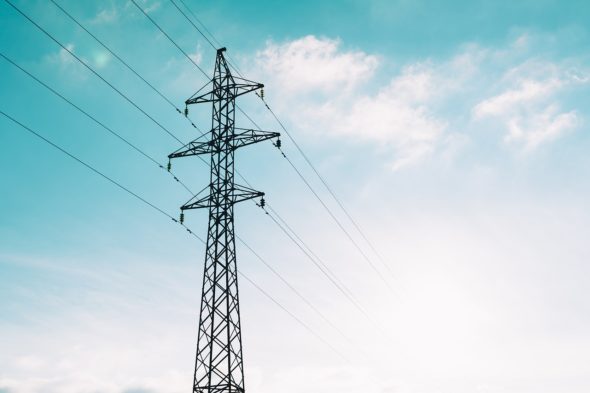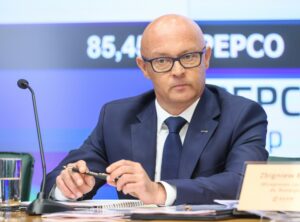Investments in power generation go way beyond constructing new plants. The huge changes that the Polish energy system will face in the coming decade must be reflected in the expansion of the power grid. Although the dynamic development of infrastructure will occur throughout Poland, the Masovian Voivodeship will be one of the main regions where PSE (owner of Poland’s power grid – ed.) wants to focus most, one of the reasons being the Solidarity Transport Hub and the small city that will emerge around it – writes Michał Perzyński, editor at BiznesAlert.pl.
The size of PSE investments
PSE has an ambitious transmission network development plan for 2023-2032. It wants to add 5.084 km of new 400 kV lines, and upgrade 1.466 km of existing 400 kV lines. In general, the program includes 331 projects, and their implementation is expected to cost PLN 35.4 billion. It should be noted that this plan is still being discussed, and it must be approved by the President of the Energy Regulatory Office. However, this document is of fundamental importance in terms of outlining the necessary investments in the grid, which must be adapted to the energy transition and its impact on Poland’s energy landscape. Finally, PSE assumes that once these investments are done, it will be possible to add the capacity from offshore wind farms, additional connections for renewable energy sources and other generation sources, as well as the power produced in Poland’s first nuclear power plant in Pomerania. PSE also wants to provide power to customers in special economic zones and high-speed railway substations that will be built to facilitate transport around the the Solidarity Transport Hub, which is under construction now. The company is also planning to connect the Młoty pumped storage power plant to the grid. However, it is worth noting that the TSO has not yet included in its plans the adaptation of the network to small modular reactors (SMRs), arguing that it is still too early to assess the requirements of new technologies on the market, and that the companies concerned have not yet clearly identified where such units would be located.
Projects in the Mazowsze region
Even though PSE works across the administrative borders of voivodships, as the company manages the grid across the country, there is no denying that the Mazowieckie voivodship is of special importance. It is the most populous region in Poland with a population of 5.39 million, so the demand for electricity here is the biggest in the country. According to PSE, the planned investments aim, among other things, to improve the reliability of the power supply, develop a ring system around major agglomerations and connect new generation sources. This will be beneficial for the region as the investments will provide an impetus for the development and modernisation of the local distribution network. We must also not forget about the money for municipalities – each of them should receive a 2 percent tax on the value of an installation.
PSE has split the key investments in the Mazowsze region into two stages: until 2028 and 2032. In the first case, we are talking about such projects as the completed Prague station and the 220 kV cable line, the construction of the Ostrołęka – Stanisławów line and the Wyszków station, the construction of the Kozienice – Miłosna line, and the modernization of the Rożki station. It is worth stressing the importance of the construction of the Solidarity Hub – this planned, huge communication node will have a huge demand for electricity. The representatives of PSE predict that a city could grow around the airport and the railway junction, as was the case, for example, in Bełchatow, where before the development of the large lignite open pit and the power plant, there weren’t any big residential areas.
The projects in the second phase, which are to be completed by 2032, include the extension of the 400 kV Line Grudziądz – Płock, the closure of the 220 kV ring around Warsaw, the modernization of the Kozienice station (220 and 110 kV), the construction of the 400 KV line Kozienice – Połaniec through a new station in the area of the Industrial Zone Europark Stalowa Wola, the modernization of the 400 kV line: Kozienice – Ostrowiec, Rogowiec – Ołtarzew – Płock, and the modernization of the 220 kV line Mory – Ołtarzew tor 2.
How’s the field work going?
When it comes to how the local communities perceive the PSE investments, the company points out that „everybody wants to have power, but body wants a power line”. This does not change the fact that dialogue with residents is a basic condition for the success of investments, and PSE assures that it involves residents in the investment process, although the company may sometimes fall short of their demands. Another difficulty is the construction of lines near built-up areas – although designers try to locate the lines as far from existing buildings as possible, it is not always doable to make major changes to the route of the line – sometimes, for example, the displacement of one pole means the need to modify the route over a much longer distance. PSE also emphasises that for some investments it is necessary to switch off existing lines, therefore timetables are necessary, as the switch-offs are planned two to three years in advance. However, all these actions are aimed at increasing the energy security of the country and the region, which is of particular importance in times of economic and geopolitical turmoil. For this reason it is pertinent that the investments are done as quickly as possible, especially as new difficulties pile on.









